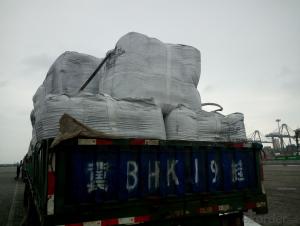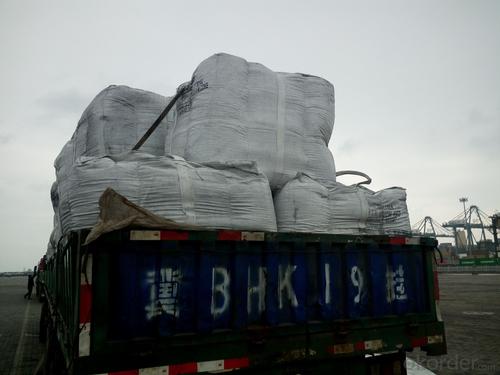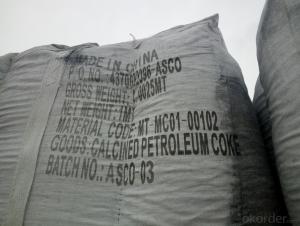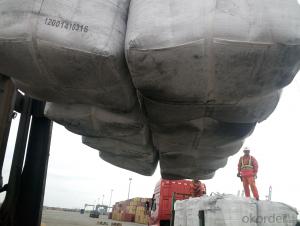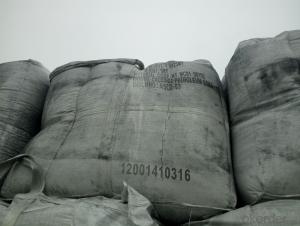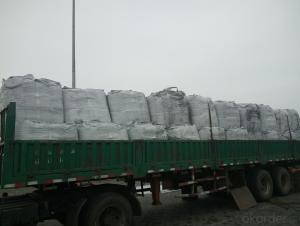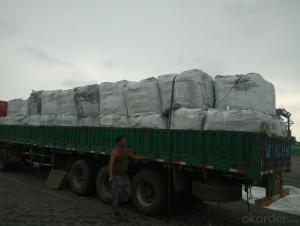Calcined Pitch Coke with Ash 0.5 percent max as carbon additive
- Loading Port:
- Tianjin
- Payment Terms:
- TT OR LC
- Min Order Qty:
- 21 m.t.
- Supply Capability:
- 8000 m.t./month
OKorder Service Pledge
OKorder Financial Service
You Might Also Like
Introduction
Pitch Coke/Coal Tar Pitch is a kind of black brittleness and blocky piece, lustrously at normal temperature. It has special odour and poisonous and can be easily flame when melting, second-grade inflammable solid.
Pitch Coke/Coal Tar Pitch is obtained from powerfully processed coal tar. Compared to petroleum asphalt, the adhesiveness is better. Coal Tar Pitch is high quality tar production with high fixed carbon. It has excellent adhesion, waterproofing and resistance against seawater, oil and various chemicals. In these properties, it is much better than petroleum asphalt tar.
It can be used to produce painting, electrode, pitch coke, and tar felt. It also can be used as fuel and the raw material of asphalt carbon black.
Features:
The morphology, chemistry and crystallinity of recarburisers have a major impact on the overall casting cost. The combined application and cost benefits, which are derived through the use of Desulco, enable foundries to manufacture castings in a highly cost effective manner.
reduces
Recarburiser consumption
Power consumption
Inoculant consumption
MgFeSi consumption
Furnace refractory wear
Scrap rate
Tap to tap time
Slag inclusions risk
Chill
increases
Casting microstructure
Productivity
Process consistency
Carbon Recovery
Compared with calcined petroleum coke, acetylene coke and
graphite electrode scrap, Desulco yields the highest carbon
recovery and fastest dissolution time
Specifications:
CPC | |||
F.C.% | 98.5MIN | 98.5MIN | 98MIN |
ASH % | 0.8MAX | 0.8MAX | 1MAX |
V.M.% | 0.7 MAX | 0.7 MAX | 1 MAX |
SULFUR % | 0. 5MAX | 0. 7MAX | 1MAX |
MOISTURE % | 0.5MAX | 0.5MAX | 1MAX |
Pictures:

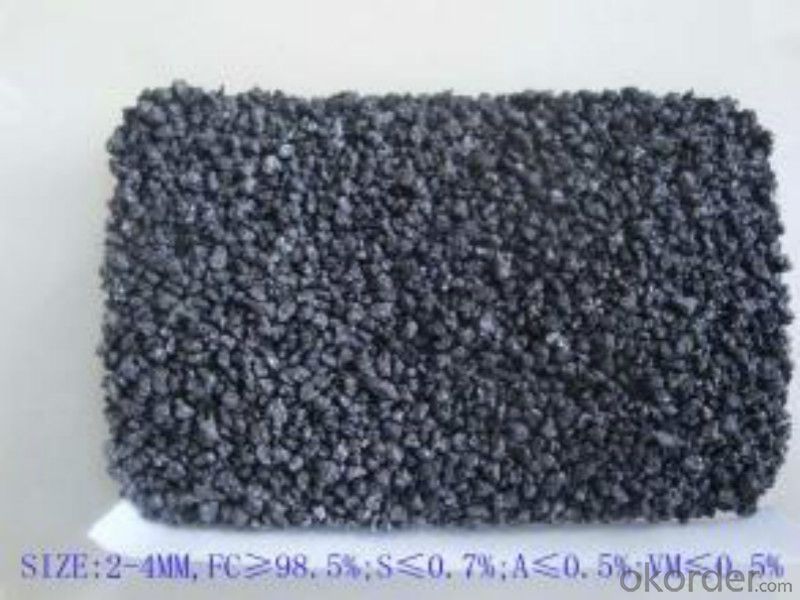

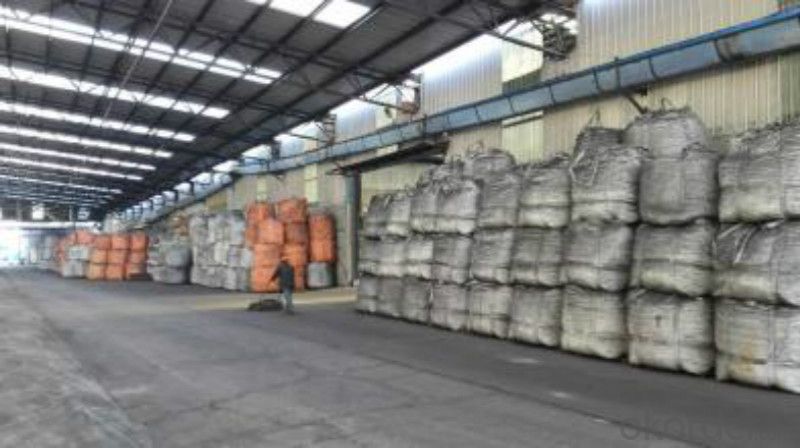
FAQ:
1.MOQ:2 Containers |
2.Size:1-3mm,1-5mm,2-6mm,3-5mm and as the customer's requirement |
3.Packing: 1 ton jumbo bag or 25kgs paper in bag |
4.Payment:T/T or L/C at sight |
5.Delivery time: within 15 days after receiving the deposit |
6.Usage: it is as carbon raiser,widely used in steelmaking,casting,casting iron,steel foundry,aluminum metallury. |
- Q: What is the density of carbon?
- Carbon's density varies depending on its form. Graphite, the most prevalent form of carbon, has a density of 2.267 g/cm³. In contrast, diamond, another form of carbon, boasts a significantly higher density of 3.515 g/cm³. Therefore, it is crucial to specify the form of carbon being discussed when referring to its density.
- Q: How does carbon affect the migration patterns of animals?
- The migration patterns of animals are significantly influenced by carbon emissions and the subsequent increase in greenhouse gases. One of the main ways in which carbon affects migration is through climate change. As levels of carbon dioxide rise, the Earth's temperature also increases, leading to changes in weather patterns and the timing of seasons. These alterations can disrupt the natural cues and signals that animals depend on to initiate migration. For certain species, migration is triggered by changes in temperature, daylight hours, or the availability of food sources. However, with climate change, these cues may become inconsistent or modified, resulting in confusion and disruption in migration patterns. Migratory birds, for instance, rely on the presence of insects and other food sources during their journey. Nevertheless, fluctuations in temperatures and shifts in the life cycles of plants and insects can impact the timing and availability of these resources, potentially leading to food shortages and hindering their ability to successfully complete migrations. Furthermore, carbon emissions have caused changes in habitat and ecosystems that further influence migration patterns. Increasing temperatures and alterations in precipitation patterns can change the distribution and abundance of plant species. Consequently, this can affect the availability of food and shelter for migratory animals. Some species may find that their traditional breeding or feeding grounds are no longer suitable due to these changes, compelling them to modify their migration routes or patterns. In addition, carbon emissions also contribute to the melting of polar ice caps and the subsequent rise in sea levels. This directly affects marine species that rely on specific breeding grounds or feeding areas. As their habitats shrink or disappear, these animals may be compelled to migrate to new areas or face extinction. Overall, the rise in carbon emissions and resulting climate change have profound effects on the migration patterns of animals. Disruptions in weather patterns, modified cues for migration, changes in habitat, and shifts in food availability all contribute to the challenges faced by migratory species. Understanding and mitigating the impact of carbon on migration is essential to ensure the survival and well-being of these animals in a rapidly changing world.
- Q: What are fullerenes?
- Fullerenes are a unique class of molecules composed entirely of carbon atoms arranged in a spherical or cage-like structure. They were first discovered in 1985 and have since gained significant attention due to their interesting properties and potential applications in various fields. The most well-known and extensively studied fullerene is the buckminsterfullerene, also known as C60, which consists of 60 carbon atoms forming a hollow sphere resembling a soccer ball. Fullerenes can also have different numbers of carbon atoms, such as C70, C84, or even larger clusters. What makes fullerenes remarkable is their exceptional stability and unique structure. The carbon atoms in a fullerene are interconnected through covalent bonds, forming a closed network of hexagons and pentagons. This arrangement gives fullerenes their characteristic shape and provides them with remarkable mechanical, thermal, and chemical stability. Fullerenes possess a wide range of fascinating properties that make them intriguing for scientific research and technological applications. For instance, they exhibit high electrical conductivity and can act as efficient electron acceptors or donors in organic electronic devices. They also have excellent optical properties, such as strong absorption and emission of light, which have led to their use in solar cells and photovoltaic devices. Moreover, fullerenes have shown potential in medical and biological applications. Their unique cage-like structure allows for encapsulation of other molecules within their hollow interior, making them ideal for drug delivery systems. Fullerenes also possess strong antioxidant properties, which make them potential candidates for various therapeutic treatments. In summary, fullerenes are a fascinating class of carbon-based molecules with unique structures and remarkable properties. Their versatility and potential applications in electronics, energy, medicine, and other fields continue to be explored, making them an exciting area of study in modern science.
- Q: What are the effects of carbon emissions on the stability of estuaries?
- Carbon emissions have significant effects on the stability of estuaries. Increased carbon dioxide in the atmosphere leads to ocean acidification, which negatively impacts the delicate balance of estuarine ecosystems. Acidic waters can harm the growth and survival of estuarine plants and animals, disrupt the food web, and reduce biodiversity. Additionally, carbon emissions contribute to global warming, leading to rising sea levels and increased storm intensity, which can cause erosion and flooding in estuaries. Overall, carbon emissions pose a threat to the stability and health of estuaries, with potentially far-reaching ecological consequences.
- Q: How does carbon affect the pH of rainwater?
- Carbon dioxide (CO2) in the atmosphere can dissolve in rainwater to form carbonic acid (H2CO3), which lowers the pH of rainwater, making it more acidic.
- Q: What are the impacts of carbon emissions on ecosystems?
- Carbon emissions have significant impacts on ecosystems. Increased levels of carbon dioxide in the atmosphere contribute to global warming, leading to changes in temperature and climate patterns. This can disrupt ecosystems by altering the timing of natural events, such as flower blooming or bird migration, and affecting the availability of resources like water and food. Additionally, carbon emissions can lead to ocean acidification, which harms marine life and coral reefs. Overall, carbon emissions pose a threat to the balance and functioning of ecosystems, ultimately impacting biodiversity and the health of our planet.
- Q: Carbon content of fly ash and fly ash roasted vector what is the relationship?
- The loss of coal ash is mainly caused by the incomplete combustion of coal, the remaining carbon is introduced, and the carbon content is high, then the amount of burning is high. From the color, it can be clearly seen that the black fly ash has high carbon content and high ignition loss. Based on the molecular weights of C and CO2, a preliminary estimate is made.
- Q: Is aluminum alloy expensive or high carbon steel expensive?
- Aluminum alloy of course, a little longer, and will be much lighter.Generally, aluminum alloy frames are much more expensive than those of high carbon steel.
- Q: How does carbon impact the fertility of soil?
- Soil fertility relies heavily on carbon, which serves as the foundation for organic matter. Organic matter, derived from decaying plant and animal residues, enhances the soil's structure, nutrient-holding capacity, and water retention. This results in improved support for plant growth and microbial activity. Not only does organic matter supply carbon, but it also provides nutrients to plants through the process of decomposition. Microorganisms, fungi, and bacteria decompose organic matter and release nutrients like nitrogen, phosphorus, and potassium into the soil. These nutrients become available for plants to absorb. Additionally, carbon in organic matter binds soil particles, preventing erosion and improving soil structure. Furthermore, carbon plays a crucial role in water management for plants. It acts as a sponge, absorbing and retaining moisture, which helps sustain plant growth during dry periods. Carbon also fosters the growth of a diverse and healthy microbial community in the soil, including beneficial bacteria and fungi. These microorganisms contribute to nutrient cycling, disease suppression, and plant nutrient uptake, further enhancing soil fertility. However, it is important to avoid excessive carbon inputs or improper land management practices, as they can negatively affect soil fertility. An imbalance in carbon availability can lead to nitrogen immobilization, where microorganisms consume nitrogen for their own growth, depriving plants of this essential nutrient. Additionally, high carbon content can create anaerobic conditions, limiting oxygen availability for plant roots and beneficial soil organisms. To ensure optimal soil fertility, it is crucial to maintain a balanced carbon-to-nitrogen ratio and adopt sustainable land management practices. Carbon is an indispensable component for maintaining soil health by improving structure, nutrient availability, water retention, and microbial activity.
- Q: What is carbon black used for?
- Carbon black serves a multitude of purposes across a range of industries. Its primary function lies in its use as a pigment and reinforcing filler in the production of rubber goods, including tires, hoses, and belts. The addition of carbon black significantly enhances the strength, durability, and resistance to abrasion of rubber materials. Furthermore, carbon black proves invaluable as a coloring agent in inks, paints, and coatings due to its exceptional light-absorbing properties. It imparts a deep black hue and improves the UV resistance of these products. Additionally, carbon black finds utility in the plastic manufacturing process where it acts as a filler, enhancing the mechanical properties of plastic components while simultaneously reducing costs. Within the energy sector, carbon black finds application as a conductive additive in batteries and fuel cells. Its high electrical conductivity significantly boosts the performance of these energy storage devices. Moreover, carbon black is employed in the production of electrodes for supercapacitors, thanks to its expansive surface area that facilitates efficient energy storage. Beyond this, carbon black also plays a role in the construction industry, serving as a reinforcing agent in concrete and asphalt. By bolstering the strength and durability of these materials, carbon black renders them more resistant to cracking and weathering. In summary, carbon black is a widely utilized substance across a diverse range of industries, including rubber production, plastic manufacturing, ink, paint, and coating formulation, energy storage device creation, and construction. Its properties as a pigment, reinforcing filler, coloring agent, and conductive additive make it an invaluable material in various industrial applications.
Send your message to us
Calcined Pitch Coke with Ash 0.5 percent max as carbon additive
- Loading Port:
- Tianjin
- Payment Terms:
- TT OR LC
- Min Order Qty:
- 21 m.t.
- Supply Capability:
- 8000 m.t./month
OKorder Service Pledge
OKorder Financial Service
Similar products
Hot products
Hot Searches
